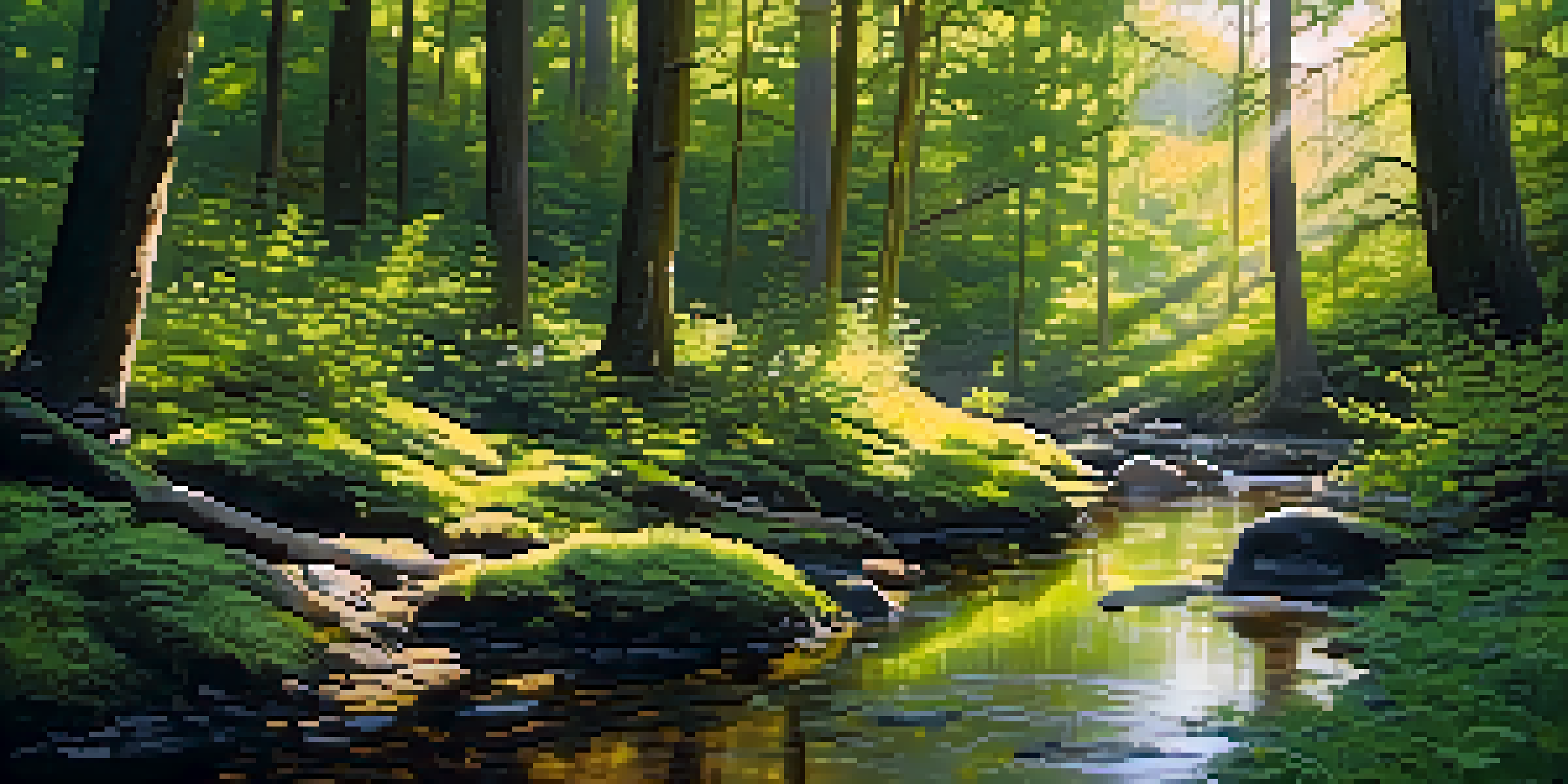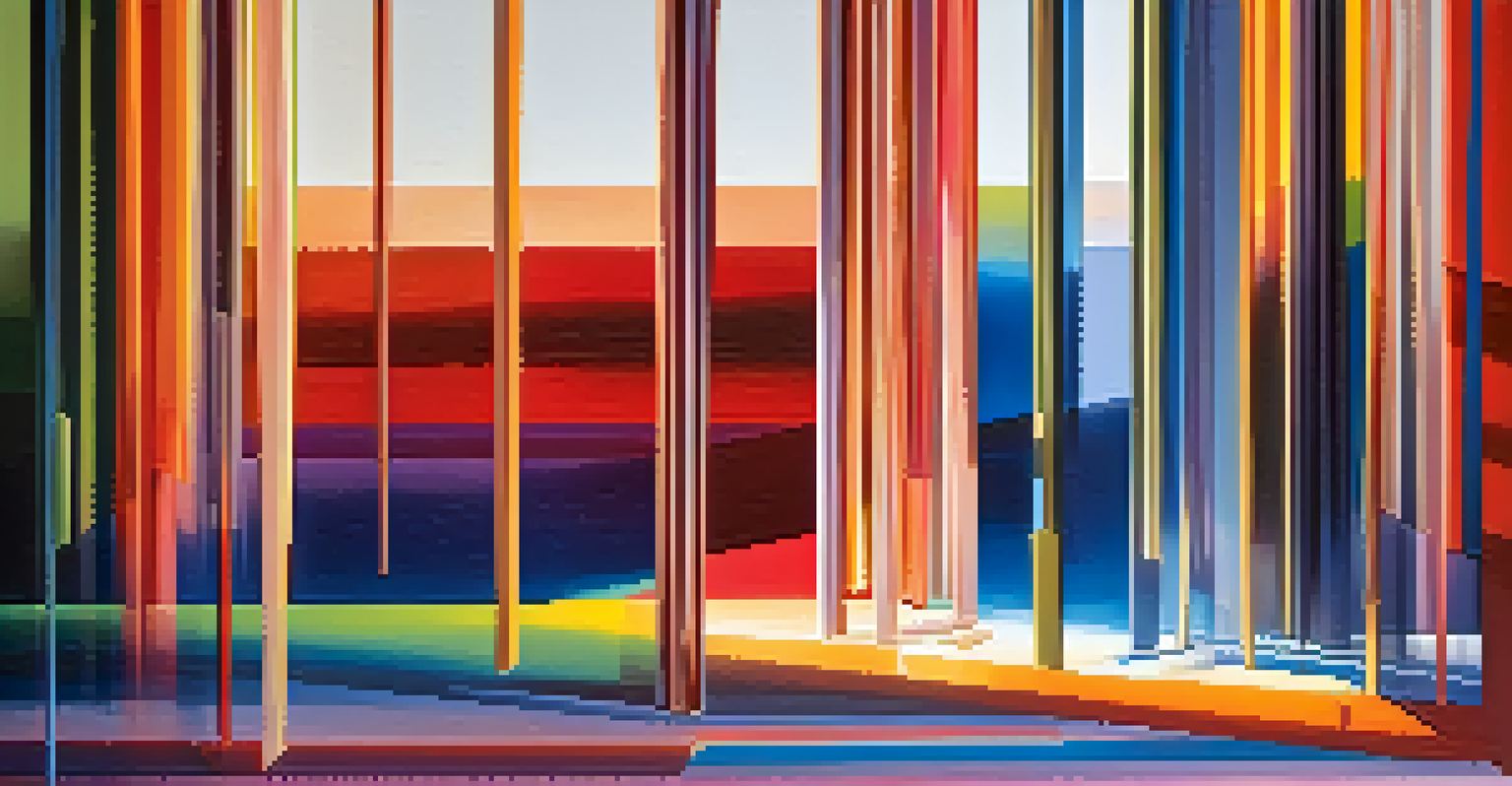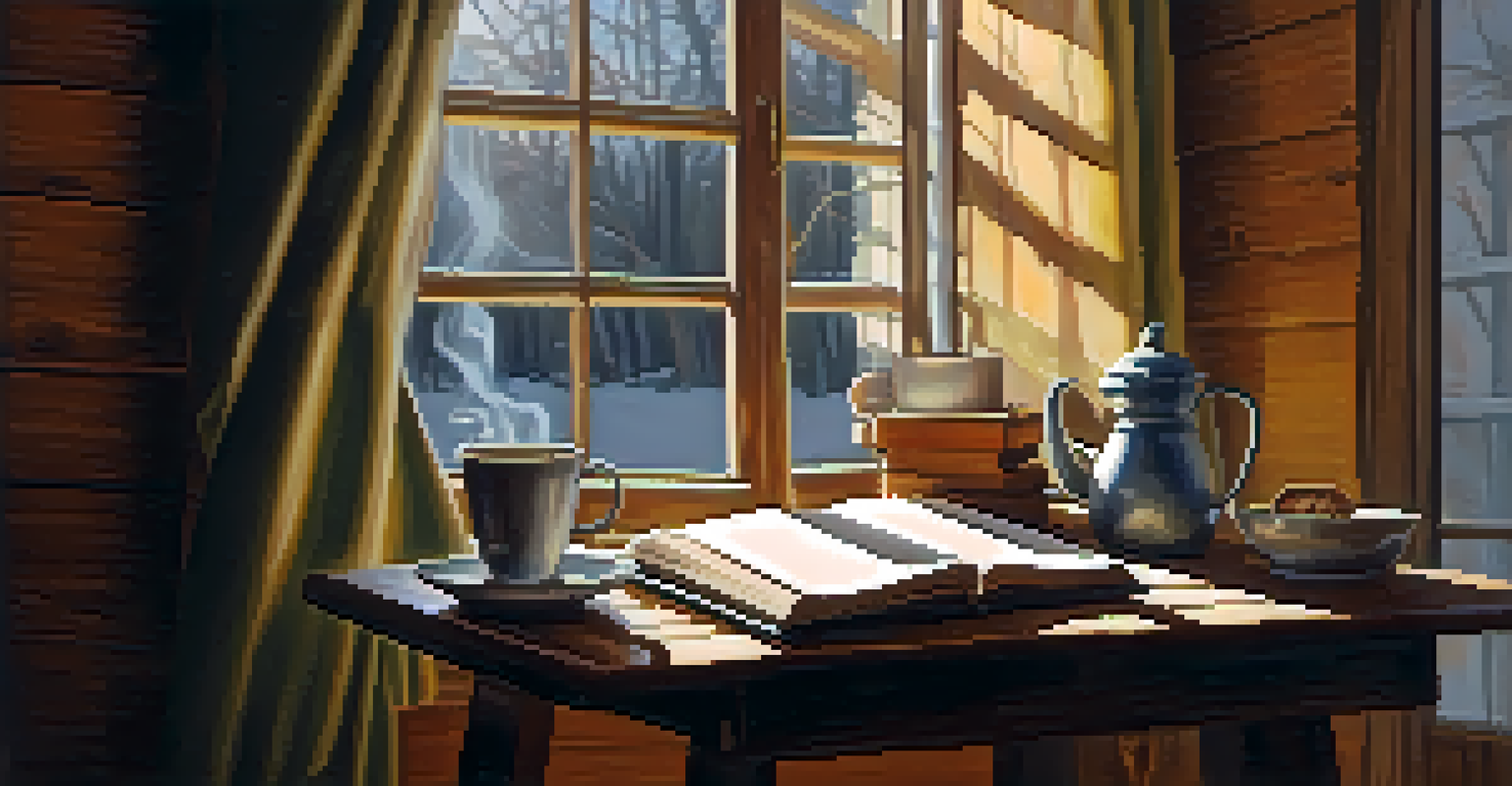Using Light and Shadow in Innovative Painting Practices Today

The Role of Light and Shadow in Art History
Light and shadow have been pivotal in art since the Renaissance, shaping how artists depict reality. Masters like Caravaggio and Rembrandt used chiaroscuro, a technique that highlights the contrast between light and dark, to add drama and depth to their work. This historical foundation continues to influence modern artists as they explore new dimensions in painting.
Light creates ambience and mood in photography and film, just as it does in painting.
Understanding this heritage allows contemporary artists to build upon established techniques while infusing their personal styles. For instance, the emotive power of shadow can evoke feelings of mystery, while light often symbolizes hope or clarity. By mastering these elements, artists can create works that resonate on both an emotional and intellectual level.
Today, many artists are reinterpreting these classical concepts, experimenting with different mediums and technologies. The evolution of digital art tools has opened up endless possibilities for manipulating light and shadow, pushing the boundaries of traditional painting. This blend of old and new is what makes current art practices so exciting and dynamic.
Innovative Techniques in Contemporary Painting
Modern artists are experimenting with a variety of techniques that incorporate light and shadow in unique ways. For example, some use layered glazing methods to create a luminous effect, allowing light to penetrate multiple layers of paint. This technique can result in vibrant colors that seem to glow from within, captivating viewers and drawing them into the piece.

Additionally, artists are increasingly using mixed media to play with light dynamics. By combining traditional paint with materials like metal, glass, or even LED lights, they introduce an interactive element to their work. This not only enhances the visual experience but also invites the audience to engage with the artwork from different angles and perspectives.
Light and Shadow Shape Art's Emotion
Artists strategically use light and shadow to evoke a range of emotions, guiding viewers’ experiences and reflections.
The use of unconventional surfaces is another trend gaining popularity. Painting on materials such as wood or fabric can alter how light reflects off the piece, adding an unexpected dimension. By breaking away from the confines of the canvas, artists can explore new narratives and emotional responses, making their work even more impactful.
Digital Art and Light Manipulation
The rise of digital art has transformed how artists approach light and shadow. Software programs like Adobe Photoshop and Procreate allow for precise control over lighting effects, enabling artists to experiment without the constraints of traditional mediums. This flexibility encourages creativity, as artists can easily undo or modify effects until they achieve their desired result.
Art is the most beautiful of all lies; it is the perfect illusion of reality, and light is the artist's best ally.
Moreover, digital artists often utilize 3D rendering techniques that simulate realistic lighting scenarios. By manipulating virtual light sources, they can create stunningly realistic images that challenge our perceptions of reality. This intersection of technology and art opens doors to new storytelling methods and artistic expressions.
As digital platforms continue to grow, artists are also exploring how light interacts with movement and time. Animated pieces that incorporate shifting light and shadow can evoke a sense of dynamism, allowing viewers to experience art in a whole new way. This innovative approach is reshaping the landscape of contemporary art, making it more immersive and engaging.
Nature as a Source of Inspiration
Nature remains a profound source of inspiration for artists exploring light and shadow. The way sunlight filters through trees or casts patterns on the ground can spark ideas for compositions and color choices. Artists often spend hours observing these natural phenomena, translating their experiences into painted forms that capture the essence of the moment.
Many contemporary painters venture outdoors to create en plein air works, directly engaging with their environment. This practice allows them to capture the shifting qualities of light throughout the day, resulting in pieces that reflect the changing moods of nature. Such works not only showcase artistic skill but also remind viewers of the beauty and transience of the natural world.
Cultural Influences Enrich Art Techniques
Different cultural backgrounds profoundly impact how artists interpret and utilize light and shadow in their work.
Furthermore, artists are now incorporating environmental themes into their use of light and shadow. By highlighting the impact of climate change or urbanization, they can create works that provoke thought and inspire action. This blending of art and advocacy demonstrates the powerful role that light and shadow can play in communicating important messages.
Cultural Influences on Light and Shadow
Cultural backgrounds significantly influence how artists interpret light and shadow in their work. Different societies have unique relationships with light, which can shape their artistic expressions. For instance, in many Asian art forms, soft, diffused light often symbolizes tranquility, while Western art might utilize stark contrasts to evoke drama.
Exploring these cultural nuances can enrich an artist's approach, offering diverse perspectives on familiar techniques. By incorporating elements from various traditions, contemporary artists create a fusion that reflects our interconnected world. This cultural exchange not only enhances their artistry but also broadens the audience's understanding of different viewpoints.
Moreover, exhibitions showcasing the work of international artists highlight how light and shadow serve as universal tools for storytelling. Through these platforms, viewers can appreciate the richness of diverse artistic expressions and the common threads that bind us all. This cultural dialogue fosters a deeper appreciation for art and its role in society.
The Emotional Impact of Light and Shadow
Light and shadow are not just technical elements; they can evoke powerful emotions in viewers. For instance, a painting filled with stark contrasts might create a sense of tension or conflict, while softer lighting can inspire feelings of calm and introspection. Artists are acutely aware of these emotional responses and often use them strategically to guide the viewer's experience.
Consider how a shadowy figure might elicit feelings of unease or mystery. In contrast, a brightly lit scene can convey joy or warmth. By thoughtfully manipulating these elements, artists can engage their audience on a deeper level, prompting them to reflect on their own emotions and experiences.
Technology Transforms Artistic Expression
The rise of digital tools and augmented reality is reshaping how artists manipulate light and shadow, pushing the boundaries of traditional art.
Additionally, the emotional weight of light and shadow can vary across cultures and personal experiences. An artist from a sunny region may favor bright, vibrant colors, while someone from a more subdued environment might explore darker tones. This subjectivity adds layers of meaning to each piece, inviting viewers to connect with the artwork in their own unique ways.
The Future of Light and Shadow in Art
As technology continues to evolve, the future of light and shadow in painting looks incredibly promising. Artists are constantly finding new ways to incorporate advancements in technology, such as augmented reality, into their work. Imagine walking through a gallery and seeing a painting change as you move closer, with light and shadow shifting in real-time—it's an exciting prospect!
Moreover, the rise of social media has created a platform for artists to share their interpretations of light and shadow with a global audience. This instant feedback can inspire new ideas and collaborations, leading to innovative practices that push the boundaries of traditional painting. Artists can now experiment and share their processes, creating a vibrant community of creativity.

Ultimately, the essence of light and shadow will continue to be a central theme in art, as it resonates with the human experience. Whether through traditional methods or contemporary innovations, these elements will remain vital in conveying emotions and stories. The journey of exploring light and shadow in art is far from over, and it promises to be an exhilarating one.